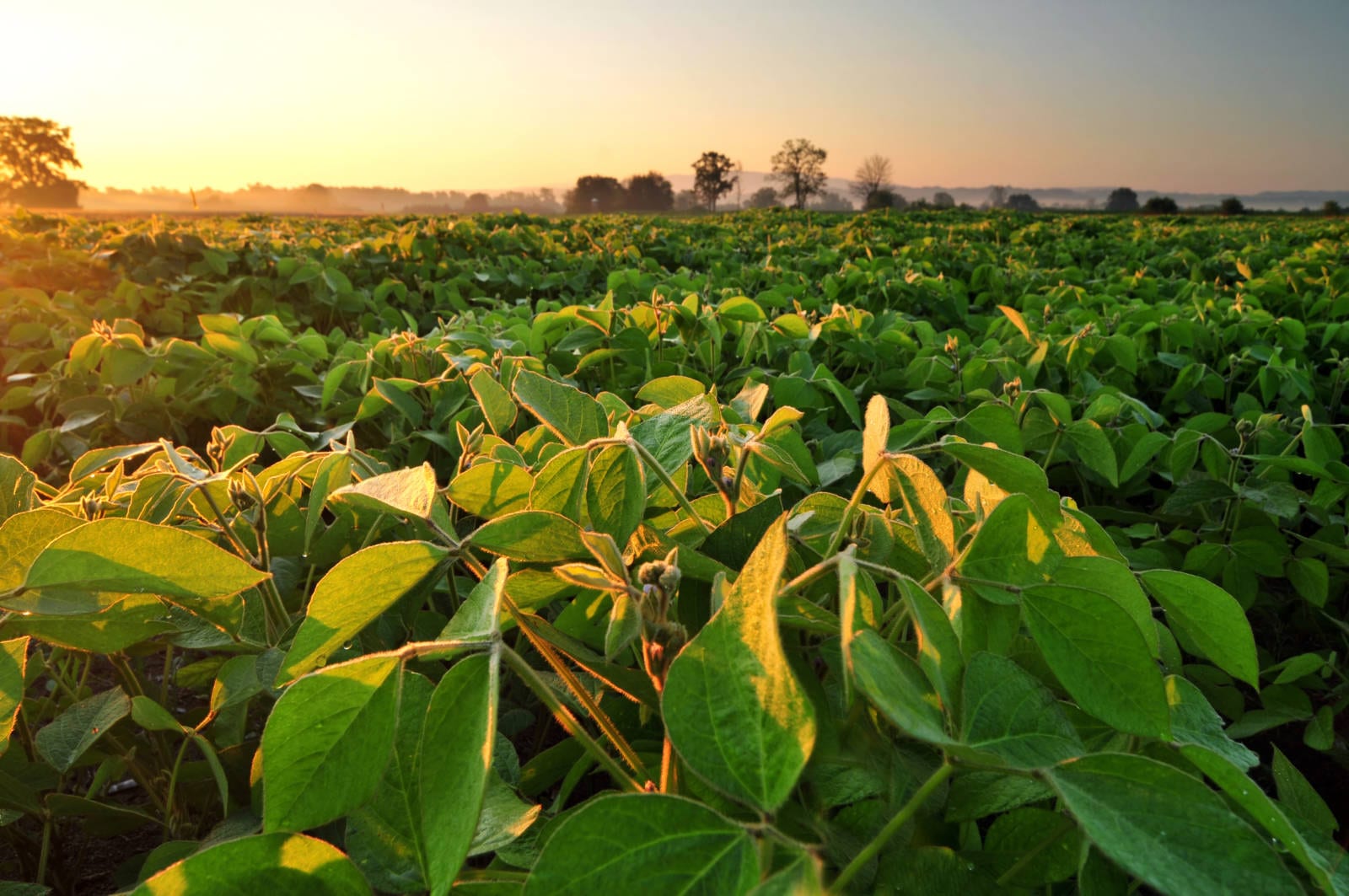When it comes to protein choices, I’ve observed the conversation subtly erode from speaking to the benefits of all protein to focus on an alleged competition between plant and animal proteins. In the grand scheme of things, this isn’t a contest at all. When all proteins are part of a balanced diet and work collaboratively to nourish the world, everyone wins.
U.S. farmers collectively produce protein as a nutrient-dense foundation for growth and health to better our global society. Soybean famers believe a critical key to the nutritional health and well-being of an exploding global population can be summed up in two words … Protein First.
Consumer interest in plant-based meat alternatives and protein-rich diets continues to strengthen, as restaurant chains scramble to add plant-based options to their choices for customers. Growth of plant-based protein and meat alternatives is anticipated to increase from $4.6 billion in 2018 to $85 billion in 2030, according to Swiss investment firm UBS.
Yet there is another, critical, element to the global protein story: meat consumption continues to increase briskly. According to the U.S. Department of Agriculture, Americans will eat 221.4 pounds of meat this year, on average per capita, the most since 2007.
Meat consumption globally continues to rise and will continue that upward trajectory at least through 2030, and global meat production has grown from about 70 million metric tons in 1961 to more than 335 million metric tons in 2018, according to the UN Food and Agriculture Organization (FAO). This is driven by two primary factors: 1) A population that increased from about 3 billion people to more than 7.7 billion over the same time frame, 2) Rising incomes and standards of living around the globe, with per-capita income skyrocketing more than 12 times over from 1970 to 2015, according to the World Bank.
The fact remains; however, that in some areas of the world, populations facing economic challenge do not have a choice. And with those people in mind, organizations such as the United Soybean Board and the World Initiative for Soy in Human Health team up to help ensure that affordable high-quality protein, such as soy, has a place in their daily diets.
All of this leaves us with a clear message, and a clear directive moving forward. Protein is essential to life. Protein demand continues to skyrocket as our planet’s population burgeons. U.S. farmers produce high-quality, nutrient-dense protein more efficiently, and more sustainably, than anyone else in the world. And collaboration among all farmers in the protein space remains critical to feeding the global population. U.S. animal and plant protein producers must work collaboratively, not competitively, with one another for the well-being of both the world’s population and our shared planet.
Our primary focus needs to be on meeting the demand for protein and doing so in ways that help us preserve a planet on which we want our children’s children to live. In nourishing the UN-projected 9.7 billion people on this planet by 2050, we need every form of U.S. protein that’s out there, including animal protein, soy and other plant proteins.
U.S. Soy will be pivotal to these efforts. Soy is a complete plant protein that is a primary source of nutrition in high-quality feed for animal nutrition. Soy is also the ideal direct source of protein for people – notably as a readily available and sustainably produced protein. This versatile crop contributes to protein provided in many commonly consumed foods found in our local grocery stores and can be found in many of the new protein choices gaining popularity.
U.S. Soy farmers will continue to lead the way for global protein production through our innovative production methods and active collaboration with the rest of U.S. agriculture, maintaining a consistent focus on:
- Quality. U.S. Soy farmers rely on a wide array of advanced technologies and tools to help ensure the consistent high-quality product, as measured by protein concentration and amino acid levels, in addition to a broader nutritional bundle that U.S. Soy provides. It offers customers a superior protein as they develop products for human consumption or animal feed.
- Innovation. We’re constantly driving innovation to develop new ways that U.S. Soy can benefit both people and animals, such as high-oleic soybeans, which provide a nutritious and more sustainable alternative to many other cooking oils.
- Sustainability. U.S. Soy farmers continually advance global sustainability, funding environmental improvements to grow more while using fewer resources. Sustainable research includes the biotic and abiotic research needed to select and breed soybeans that are resilient and can face weather extremes and stresses caused by various pests.
- Transparency. As soy becomes a bigger part of diets around the world, we strive to share information on farming practices to feed consumers’ growing hunger for knowledge about the food they eat and how it’s grown.
As economic conditions improve in both developed and emerging markets, protein demands continue to grow, according to the FAO. Some even estimate that an additional one-third or up to 50% more protein will be needed by 2050. Collaboration between animal- and plant-based proteins bolsters our ability to serve our shared global protein market. Together we can answer the many critical challenges facing our world: nourished versus malnourished, environmental improvement versus degradation, confident customers versus doubtful ones.
Rather than standing in the past, we must forge together toward the future. If we add Protein First and subtract unnecessary rivalry, the globe will benefit as we set an example for generations to come.
This piece originally appeared on Ruhland’s LinkedIn blog.
